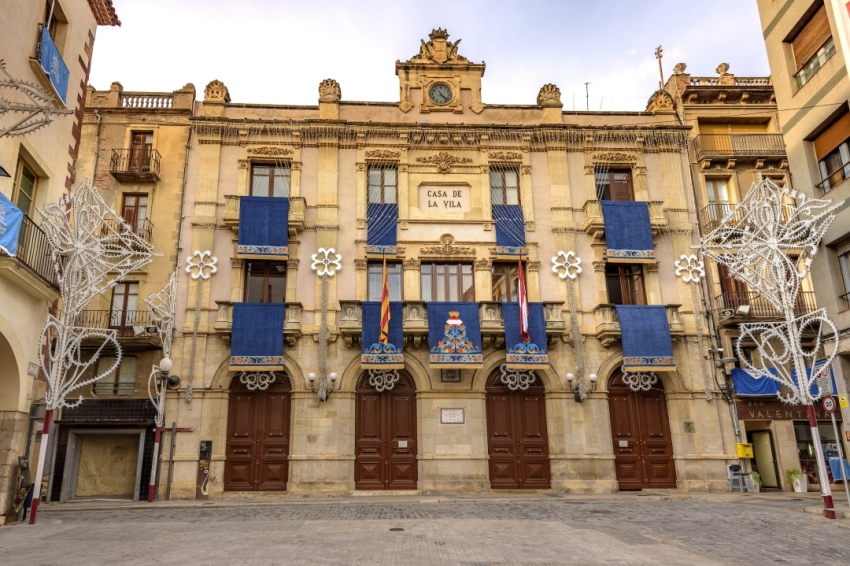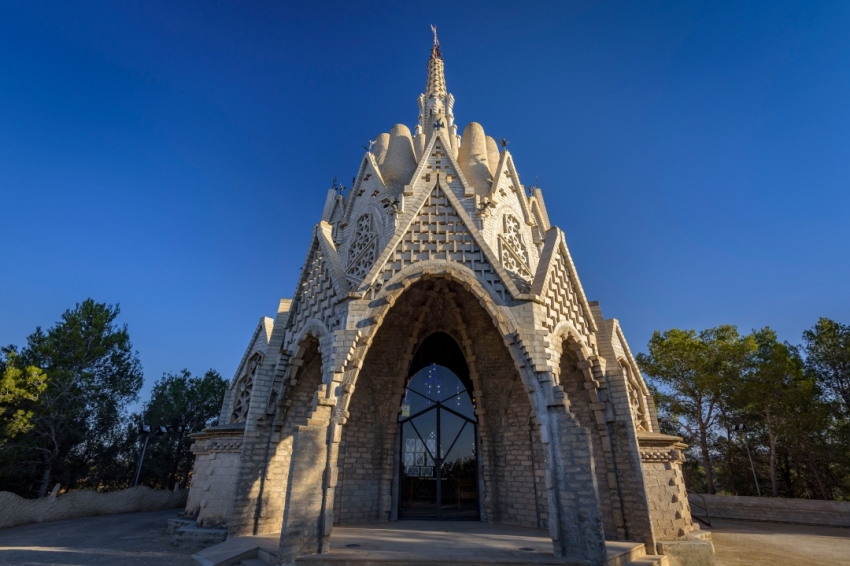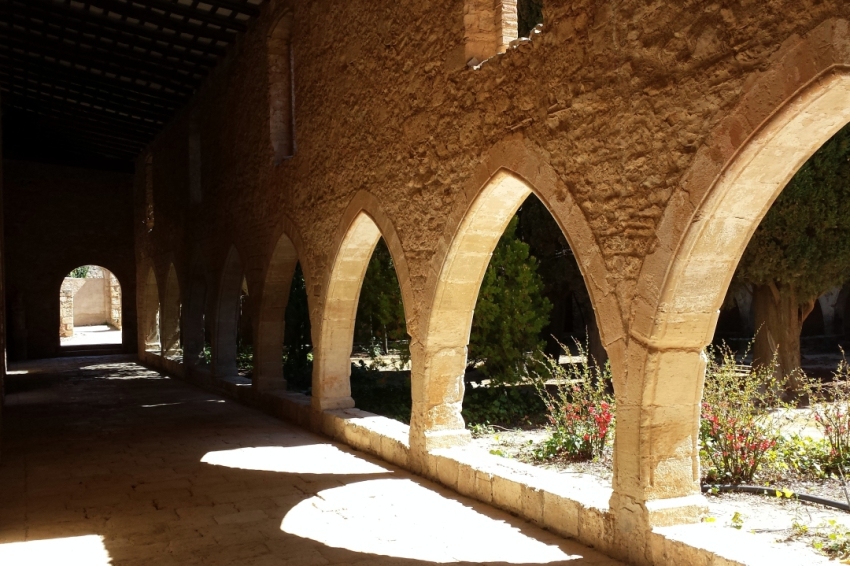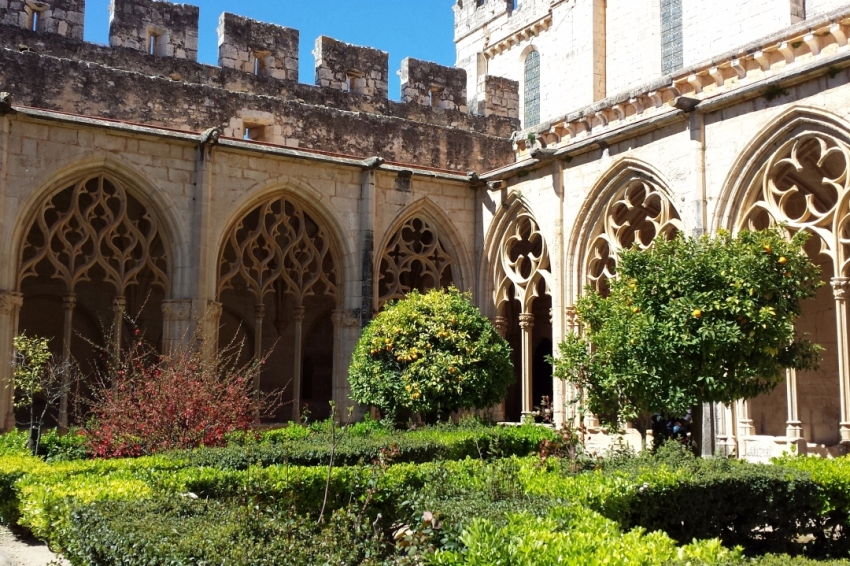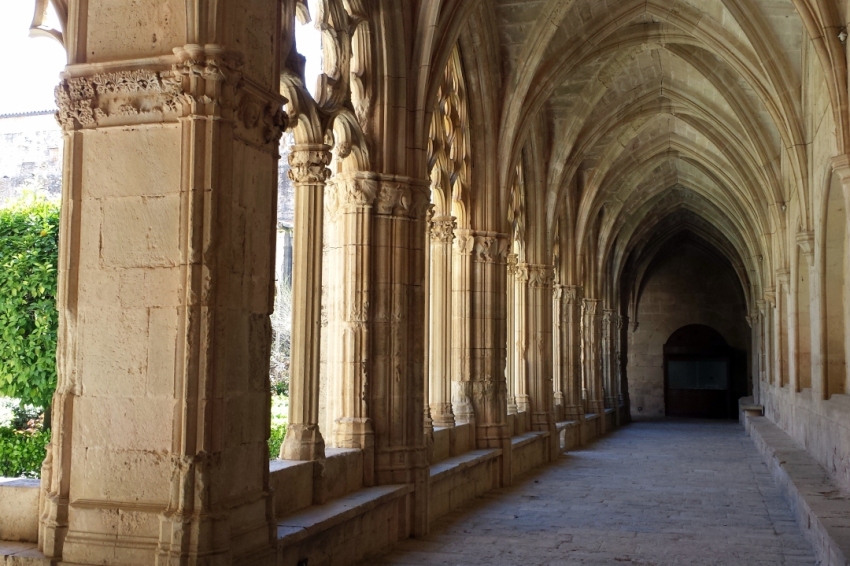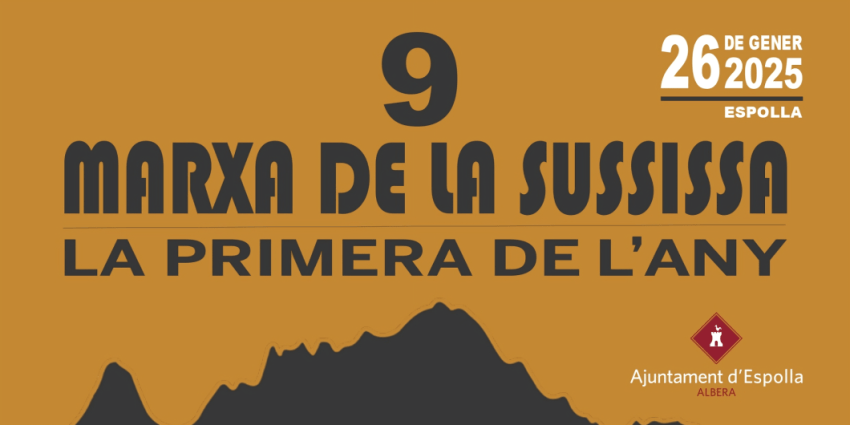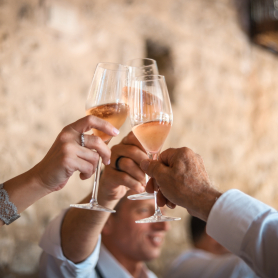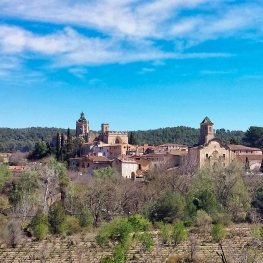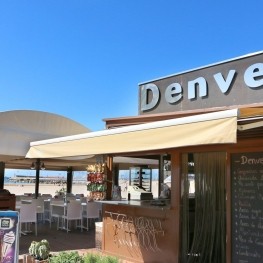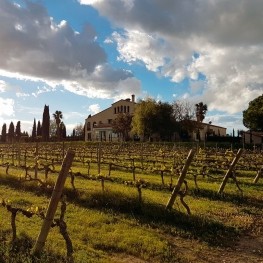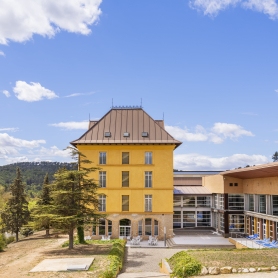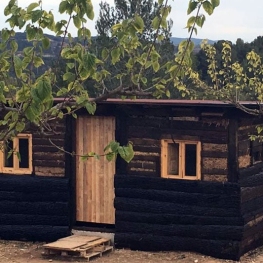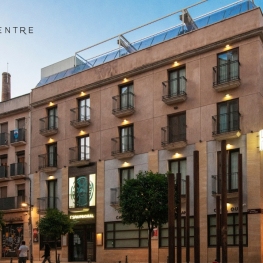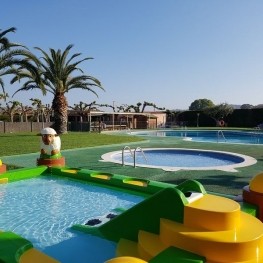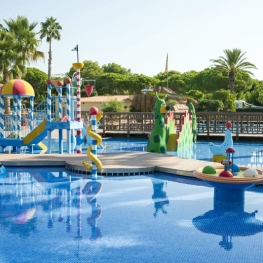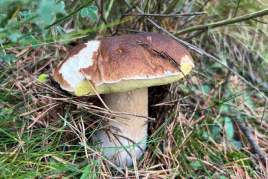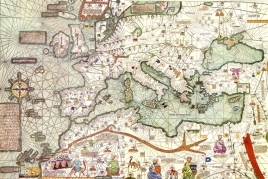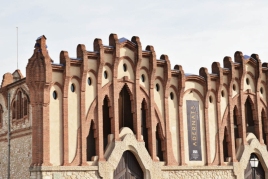Cistercian Route: Culture, fauna and flora around Santes Creus
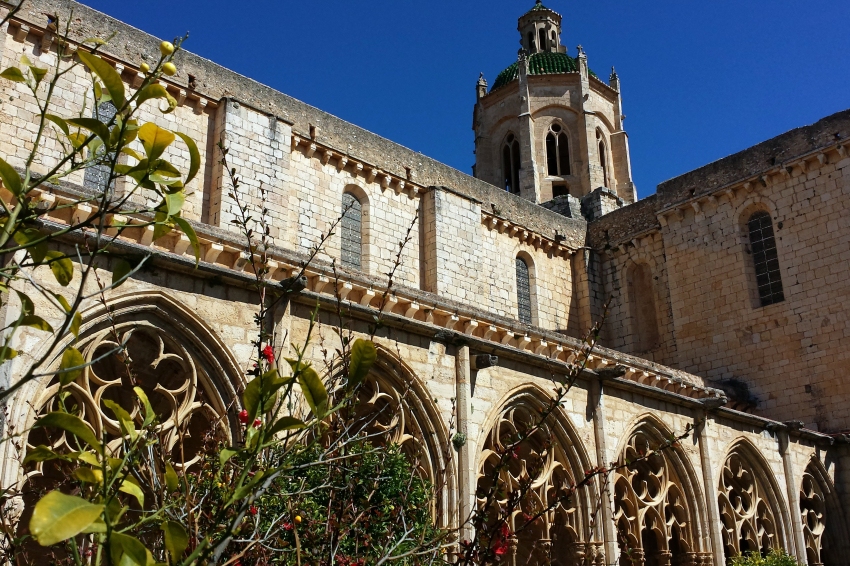
In this second installment of the Cistercian Route, we invite you to discover the Santes Creus monastery and its regions, rich in fauna and flora thanks in large part to the influence of the Gaià river, a river that has marked the historical evolution of these soils.
Everything will take place in Alt Camp, a region with a strong role for gastronomy and traditional culture, the region of calçots and castles par excellence.
Between castles and calçots: Valls
In the same way as in the rest of the Camp de Tarragona regions, in the Alt Camp we find a strong presence of modernist cooperative wineries, the towns where you will find are: Valles, Cabra del Camp, El Pla de Santa Maria, Nulles, Bràfim, Vila-rodona, Aiguamúrcia, Santes Creus, Alió....
We will start the route through Valls, the capital of the region. This municipality is located in a traditional place of passage, between Barcelona, Tarragona and Lleida, which has allowed it to be an important center of commercial activity at different times in history. Of this legacy there are interesting buildings to visit.
First we will go to the Town Hall Square, called Plaça del Blat. This place is known as the cradle of the human towers since it is the place where the two local human tower groups face each other throughout the season.
The town hall building has been maintained since 1595, however it has undergone some reconstructions over time. We will continue to the church of Sant Joan built throughout the 16th century in the Gothic style and which has a 74-meter-high bell tower, the highest among the parish churches in Catalonia. We can only see the complete facade of this one from Escribania street from where we can enter the small Jewish street of Valls and we will still find some samples of his stay in the city.
Finally we recommend a visit to the Capilla del Roser, located on Paseo de la Cort, very interesting due to the two large glazed tiles inside that represent the battles of Lepant and a look at the monument to the castles by Josep Busquets, located on the walk of the Capuchins and that honors the fact casteller.
On the other hand, it is worth noting the protected geographical indication of calçot de Valls, which makes the city the capital of calçot during the months of November to April. The celebration of popular meals with the calçot as the protagonist has spread throughout the region and the secret of the romesco sauce, couple of the essence of this tradition.
Corners of the Alt Camp
Leaving the capital we will find other excellent places scattered throughout the region. If we take the C-37 in Valls we will arrive at Alcover, a municipality that has integrated and preserved the passage of different styles of construction to the daily life of the town.
We find interesting medieval remains such as the portals of San Miguel and de la Saura, the convent of Santa Ana or the old church. At the same time, the Renaissance work by the local master Pere Blai also has a strong weight, of which we will highlight the new church, the Town Hall, Ca Cosme and the Abbey. Returning to the capital along the same road and taking the C-51 from Valls we will arrive at Alió, a small town of 400 inhabitants that perfectly preserves its medieval structure, maintaining the castle, the parade ground and the structure of the wall.
Following the same road and turning to the right, we will arrive at Montferri, an even smaller town where the sanctuary dedicated to the Virgin of Montserrat is located. This modernist-style construction was begun in 1925 by a disciple of Gaudí, but it was not until 1999 when its construction was completed. It is an authentic jewel visible from different points of the Camp de Tarragona territory.
Once we have visited the sanctuary we can make our way to the Monastery of Santes Creus taking advantage of the landscapes provided by the river Gaià.
Along the river Gaià to the Monastery of Santes Creus
The Gaià river was a natural border when the Muslims occupied Catalonia, from these historical events we have been left with many thousand-year-old buildings, towers and castles in both basins that can be accessed by dirt roads. One of these magnificent constructions is the Rodonyà Castle, built in the right basin of the river a few kilometers from Montferri. It is in the process of being restored and allows us to appreciate the style of the constructions of the time.
But in addition, these basins are home to very specific vegetation and fauna, which we will not find in many other places in Catalonia thanks to the low presence of man. It is worth noting the Santes Creus boulevard on the left bank of the river, which maintains its own species of riverside vegetation, almost exclusive in Catalonia.
Once here, all you have to do is cross the Gaià river to find the Monastery of Santes Creus, in the municipality of Aiguamúrcia, it is perfectly qualified to be visited, also with a guide if you are interested.
The Royal Monastery of Santes Creus
The Monastery of Santes Creus is a Cistercian monastery located in the Alt Camp region, between the sea and the mountains. The visit of the monastery will allow us to know at the same time a region with a strong role of gastronomy and traditional culture, the region of the calçots and the castells par excellence. It is considered one of the best examples of Cistercian architecture in the Iberian Peninsula and has been declared a National Monument.
The monastery was founded in 1158 by Ramon Berenguer IV and his wife Peronella, as a subsidiary monastery of Poblet. The main building of the monastery is the church, dedicated to Santa María, which stands out for its sobriety and simplicity, characteristic of the Cistercian style. The church has a Latin cross plan with three naves and a chancel with an ambulatory and radiating chapels.
Another prominent part of the monastery is the cloister, built in the Gothic style, with pointed arches and capitals decorated with plant and animal motifs. It is a quiet and secluded space where the Cistercian monks carried out their daily activities and meditation.
Throughout the centuries, the Monastery of Santes Creus was an important religious and cultural center. It housed a grammar and rhetoric school, a library and various craft workshops. During the Middle Ages and modern times, the monastery had great economic and territorial power.
Although it was abandoned and partially destroyed during the 19th century, in 1921 it was declared a national monument and its restoration was ensured. It is the only one of the monasteries on the Cistercian route that does not have a monastic life and therefore allows us to explore all its corners thus becoming, for a while, monks of the Cistercian order.
Today, the Monastery of Santes Creus can be visited and is a major tourist attraction in the area. Visitors can tour the church, cloister and other spaces of the monastery, discovering its rich history and architecture. Exhibitions and other cultural activities are also organized in the monastery.
It is worth noting the two cloisters, especially the largest, due to the meticulousness of the capitals of the columns, mostly the work of an English builder. We will also see the bedrooms, considered to have extraordinary acoustics, which is why it is currently used as a classical music concert hall, apart from the multitude of perfectly preserved rooms and buildings outside the monastery, such as the royal palace or the Romanesque church on the plan.
With its church and cloister, it offers visitors the chance to step back in time and explore the monastic life of bygone eras. It is a site steeped in history and a must for lovers of art and culture.
The monastery is part of the Cistercian Route, together with the monasteries of Poblet and Vallbona de les Monges. This route allows you to discover the three most important Cistercian monasteries in Catalonia and discover their cultural and spiritual legacy.
What to do
Mon Casteller- Museu Casteller de Catalunya
VallsVisit the Casteller de Catalunya Museum and discover the origins of the…
Reial Monestir de Santes Creus
AiguamúrciaThe Royal Monastery of Santes Creus is located on the banks of…
Museu Apel·les Fenosa
El Vendrell (a 14.9 Km)Visit the Apel·les Fenosa Museum and discover the legend of a 16th…
Where to eat
Restaurant Denver Cambrils
Cambrils (a 23.5 Km)From the legendary Xiri to the current restaurant, Denver offers a creative…
L'Orangerie de Clos Barenys
Vila-seca (a 20.3 Km)Under our fires, we prepare haute Mediterranean cuisine by selecting the finest…
Iberik Rocallaura Balneari
Vallbona de les Monges (a 26 Km)Iberik Rocallaura Balneari is located on the Cistercian Route, in the municipality…
Arena Tapas Restaurant
Salou (a 21.1 Km)Enjoy an innovative cuisine, with high-quality local products of proximity, with an…
Where to sleep
Càmping Trillas Spa Tamarit
Tarragona (a 14.7 Km)Its peaceful location, between the sea and the mountains, surrounded by various…
Càmping Stel
Roda de Berà (a 13.6 Km)Camping bungalow on the beach of the Costa Daurada, with modern facilities…

